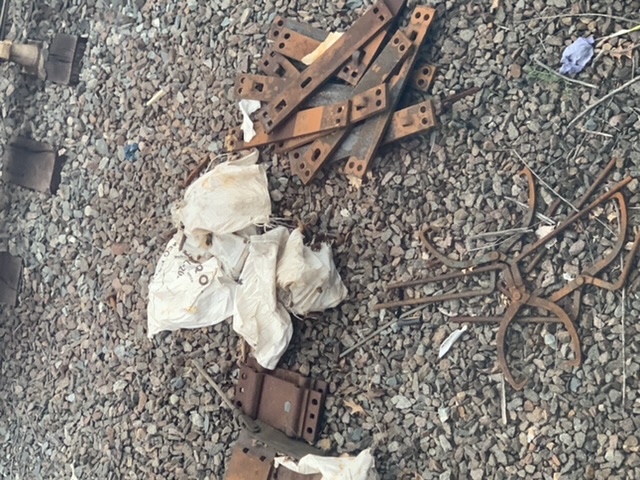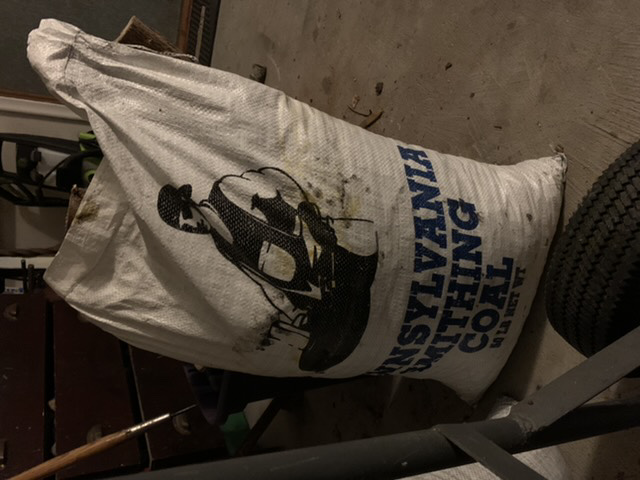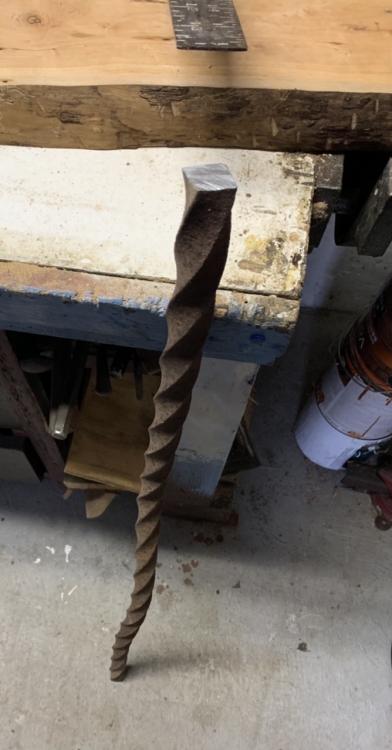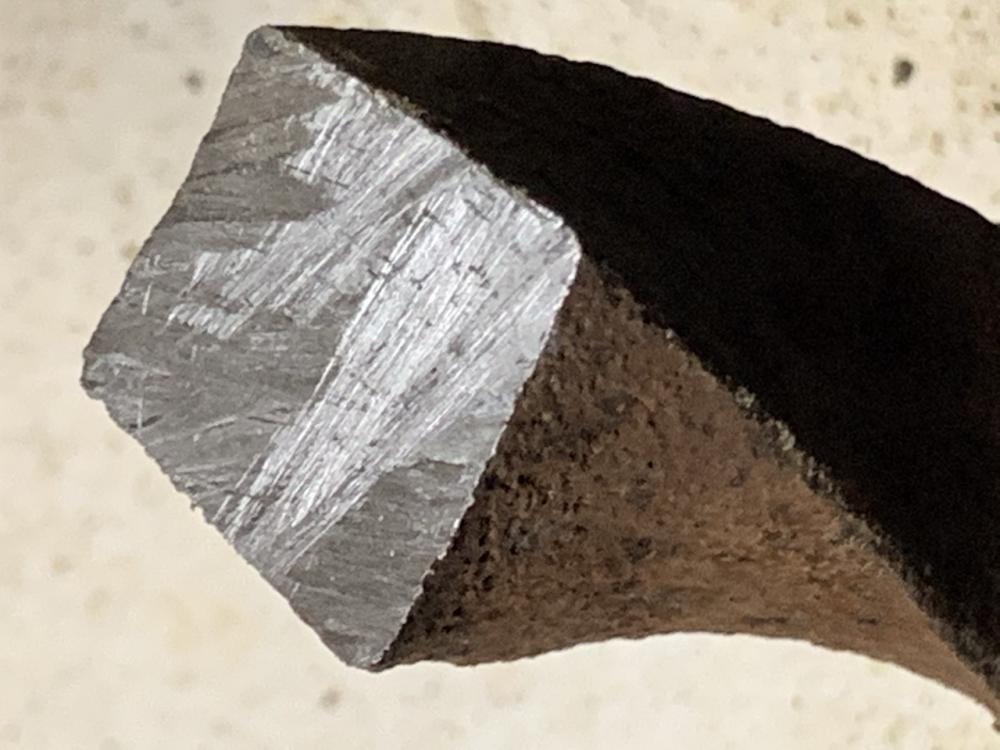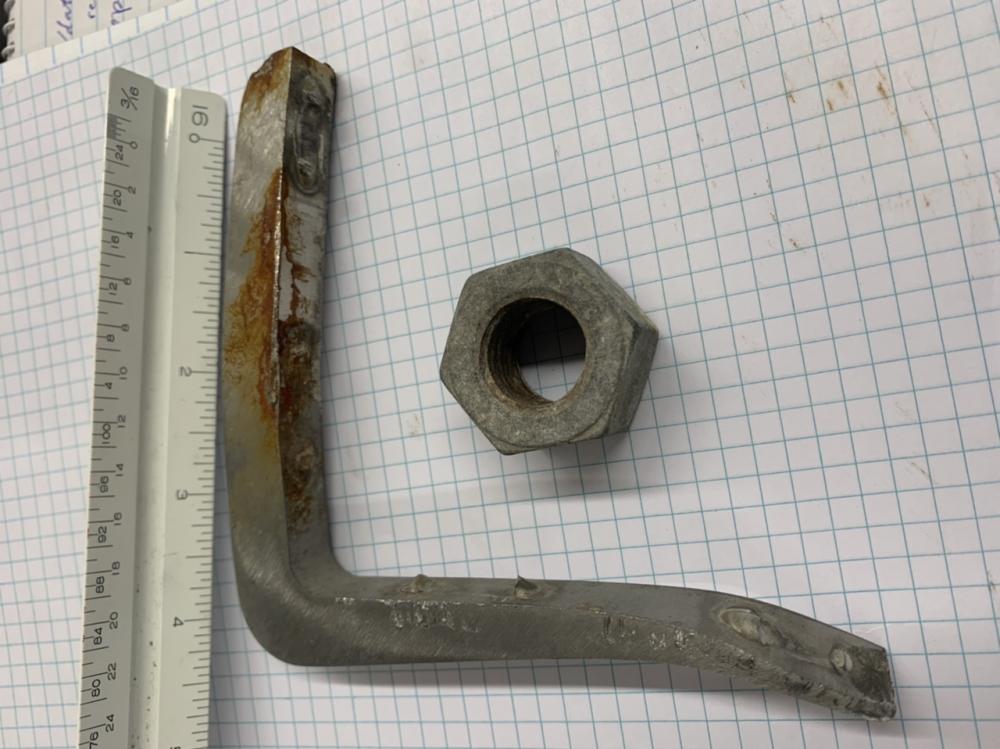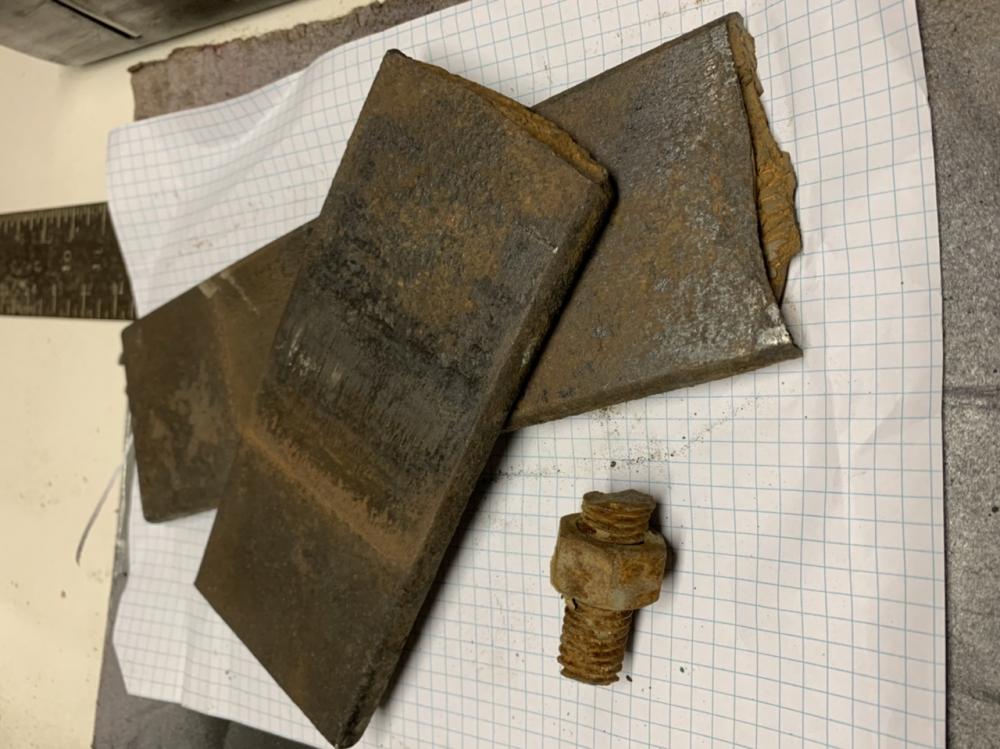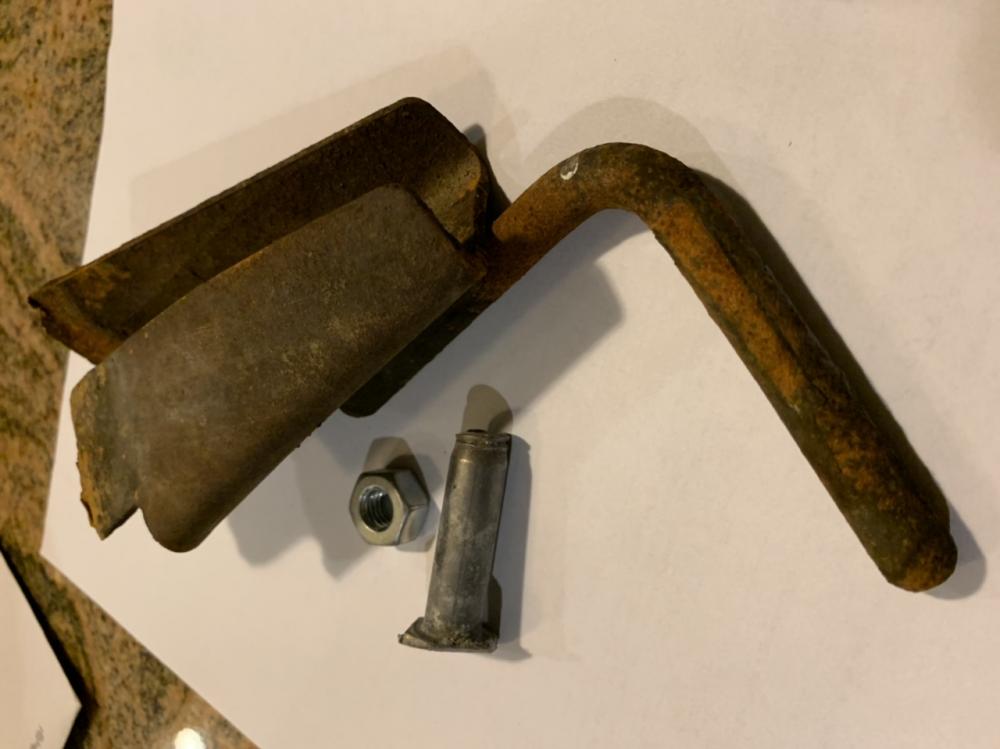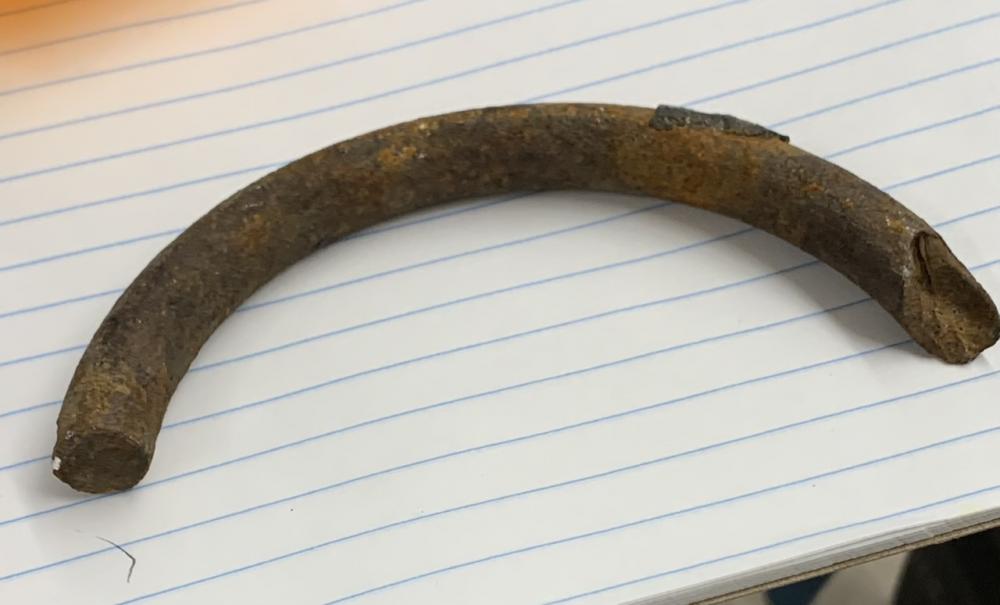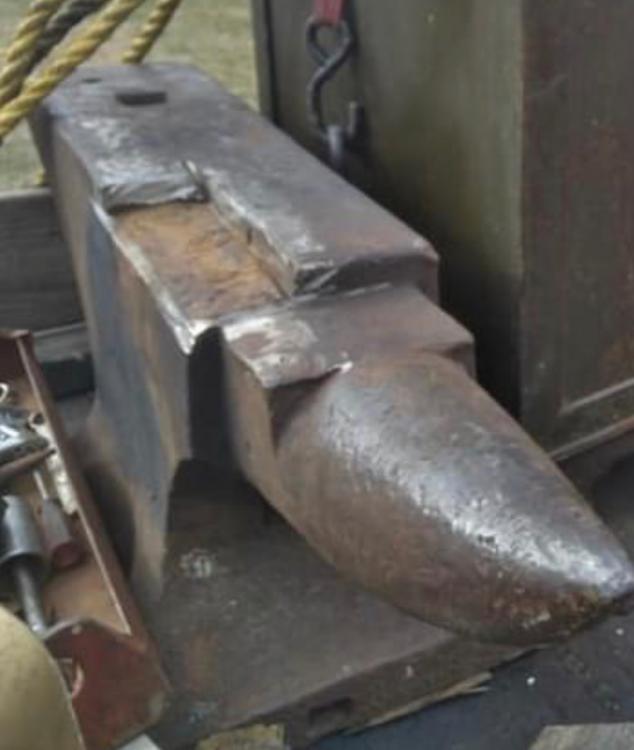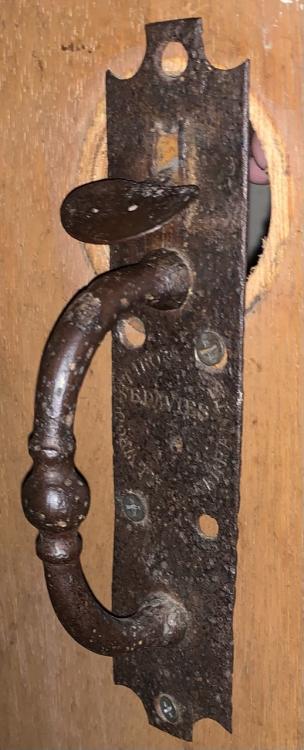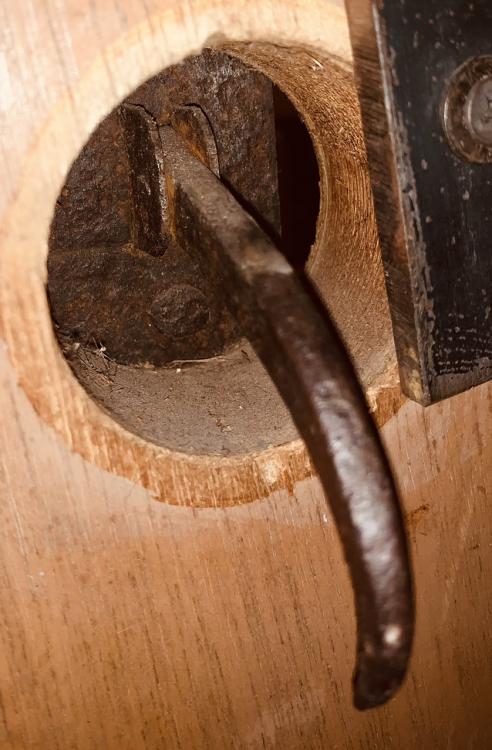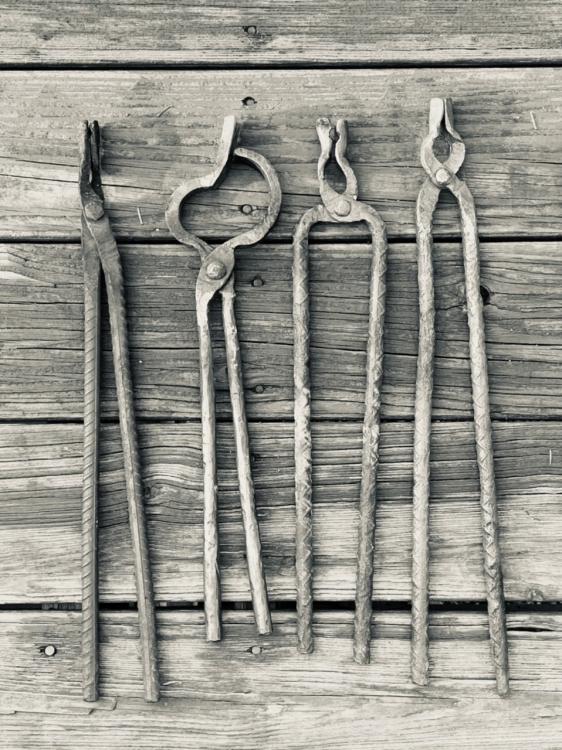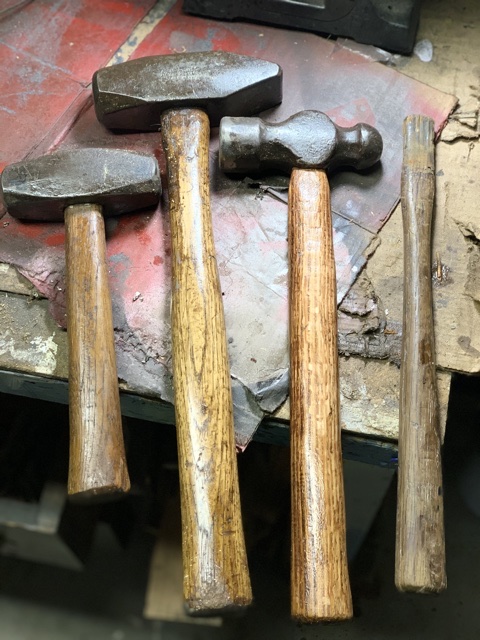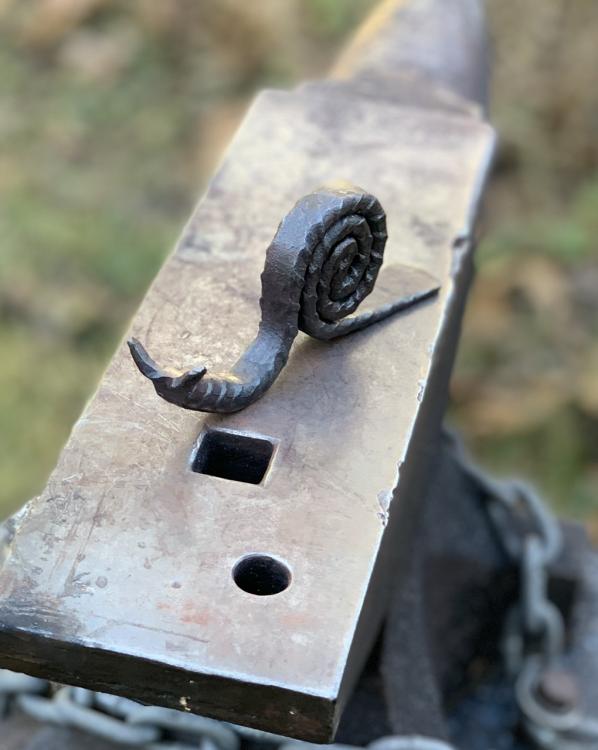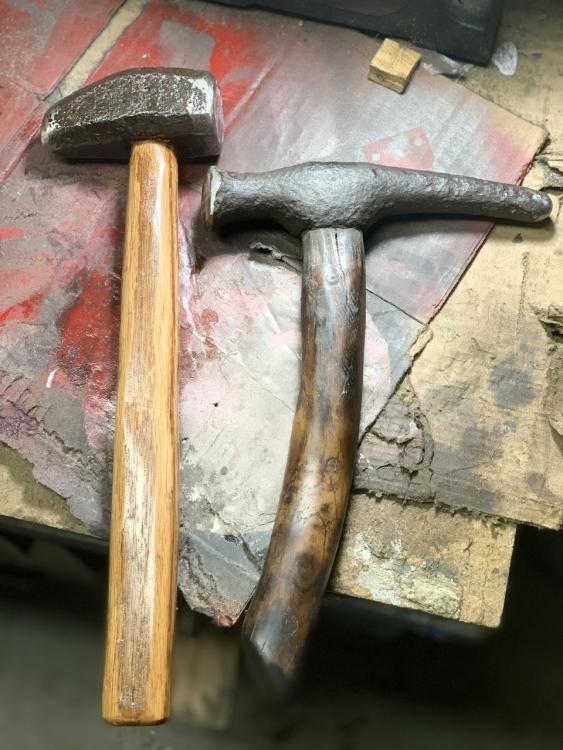
elmoleaf
Members-
Posts
77 -
Joined
-
Last visited
Content Type
Profiles
Forums
Articles
Gallery
Downloads
Events
Everything posted by elmoleaf
-
Finally followed thru on redeeming a gift certificate to an online store...Aspery’s Skills of a Blacksmith, beeswax, a slitter, and a brass brush were dropped at my door. Also recently found some more road kill steel, and I bought a couple bags of coal from a local supplier. While riding the train home, glanced down when we stopped unexpectedly and saw this steel on the adjacent track. Looks like some large two person tongs for lifting track? And some thick plate. This is an active track and property cannot be taken. It is strange though how they just seem to abandon bits and pieces along the way and never seem to clean up when they’re done working on the track.
-
Have you looked at used wood pallets? Some of them are made from pretty tough wood.
-
Twisted rebar is generally the earliest type....invented by Ernest Ransome. In use late 19th thru early 20th Century.
-
This early 20th C rebar followed me home a few years ago...finally cut off a manageable size piece from the larger mangled length. It’s about 7/8” across on the least dimension, but not really square. Do not have a specific project in mind for it yet. I don’t have a power tool for cutting, so this was sawn thru by hand with a hack saw.
-
More Boston roadkill....galvanized nut, and a piece of stainless. I think the stainless was ripped off of hardscape bench or planter wall...they install stuff like this at the wall joints to deter skateboarders from doing tricks/sliding along the top outside edge of the wall.
-
More stuff from the road over the last few days..heard a big clang as a passing car ran over these broken leaf spring pieces. Also some sort of broken bracket, a new nut, and a couple broken bolts. Also saw what looked like substantial chunk of broken plow blade, but was too big to lug back to the office/home.
-
found a small bit of coil spring by the side of the road in Boston. I keep my eyes peeled when walking to work and sometimes find useful bits like this.
-
Looks like it’s a Hay Budden.
-
Saw this for sale on xxxxxxxxxxxxx. Listed at $1200, 330 lb PW anvil, he was “taking to get welded” but decided to sell instead. Another photo shows the missing chunk placed adjacent to the hole. Judging by the rusty area, seems like there was a partial delam, so they decided to cut it off?
-
Show us your thumb latches
elmoleaf replied to jlpservicesinc's topic in Blacksmithing, General Discussion
This is mine, but not made by me. Marked B. DAVIES ALL WROUGHT IRON WARRANTED. Found with a metal detector about 35 years ago. It’s currently kludged into a hollow core door. It’s interesting how the latch is pinned to those separate thin side cheek pieces, which seem to be wedged/notched into the sides of the latch hole. Aside from the actual pull handle, it’s all pretty thin and light material. -
Agree...very beautiful and clean. Well done!
-
Video: can you use rebar for an axe drift?
elmoleaf replied to TechnicusJoe's topic in Slitters, Punches, Drifts, etc
Love your videos. Nice drift. Did you drift the test head upside down though? Widest part of the eyehole seemed like it would be facing the handle the way you did it, instead of furthest from hand/at top of the axe. -
My first pair of tongs is far left..5/8th rebar, with drilled bolt hole and peened over bolt. Got ambitious on the second pair (2nd from left)...Pelgrom tongs with wacky proportions and weak area in one of the jaws. These were drawn out from some heavier rebar. They haven’t broken yet, but do have some unwanted flex. 3rd from left pair....kind of a cold mess (they’d be a hot mess if I actually used them). Jaws went awry and one is very weak. Ended up with odd boss/handle junction angle. But like the previous pair, I punched the rivet hole and peened a rod for the rivet. Made the pair on far right today. These are much stronger than the previous 2 efforts. I’ve filed a groove across the jaws so I can hold stock in either direction. Cold and snow ahead in the forecast, so my forging is likely over until spring.
-
Wire brushing off scale during forging
elmoleaf replied to Supaflupa's topic in Tools, general discussion
Wow, what a difference a butcher block brush makes! Used one for the first time today...makes short work of scale and getting a nicer finish. I had been using a wood handled painter’s wire brush, which I’ll keep for more complex detailed areas that the butcher block doesn’t do well with. -
Made handle for the ball pein on the right in the photo. Oak split from log with a froe, then shaped with drawknife and sanded.
-
Cold does not enhance the concentration of urushiol. It is found in poison ivy’s roots and stems throughout the year. In spring, as the sap rises into the stems and the plant leafs out, poison ivy has the most places from which the oil can spread to you. The best time to actually dig it out is fall/winter, when the leaves are less oily or gone....but all the usual precautions are still needed. And of course, the oil can transfer from tools, clothing, etc to your skin. If your chips are from a suburban tree service you’re likely to be ok, but ask them anyway. Most lawn and street trees they deal with are not likely to be poison ivy infested. I had a willow near me that had poison ivy vines in it for years...going up over 30’ and about 1.5” thick. Tree service would’ve been crazy to touch that one!
-
Christmas 2020 is headed this way
elmoleaf replied to Glenn's topic in Blacksmithing, General Discussion
Before the cold weather hit (I don’t have an indoor shop), I made a little creature from rebar for a relative. -
Fantastic! Love it....very original.
-
What did you do in the shop today?
elmoleaf replied to Mark Ling's topic in Blacksmithing, General Discussion
Also added handle to the mystery hammer (left). Face is concave, should be fine for striking punches etc. Rounded end is sorta cross pein/round. Other hammer maybe old auto body hammer...cleaned up ends...slender rounded end may be useful for some tasks. -
What did you do in the shop today?
elmoleaf replied to Mark Ling's topic in Blacksmithing, General Discussion
Replaced the spindly handle (far right) on a big ball peen hammer. Handle was too round and small diameter, so hammer would twist in my hand. Had some oak kicking about...not the best material for handle, but was easy enough to shave down with a draw knife. The 48oz cross pein followed me me home from an exit off ramp about 1992...saw it one day...was still there the next day...and it was safe enough to pull over and grab it. The short handle 2lb hammer (far left) I inherited from my father. -
Thomas, thank you for the info..I’ll do some reading on that. Yes, I have old chisels marked “cast steel”. ...that’s what got me thinking along those lines, along with the hammer’s seemingly smooth uniform shape.
-
Dimensions are in the photos. Weight is a bit less than 2lbs. Have not spark tested but think it is cast steel, not wrought, based on pocked appearance vs “grainy” rusted wrought I’ve dealt with. Closest shape I’ve seen is a Bell linesman pointed peen hammer. Ship maul is similar, but this has a deliberate curve to the narrow end. Just trying to understand what it is before any doing repurposing....though the rather small roundish eyehole will make getting a strong handle on it difficult. And the deep surface defect may require too much grinding. Guess this will remain a junk basher for now, instead of wasting time trying to tweak it into a nicer more useful tool.
-
Looks like someone tried to repurpose or kinda fix a broken claw or brick hammer?
